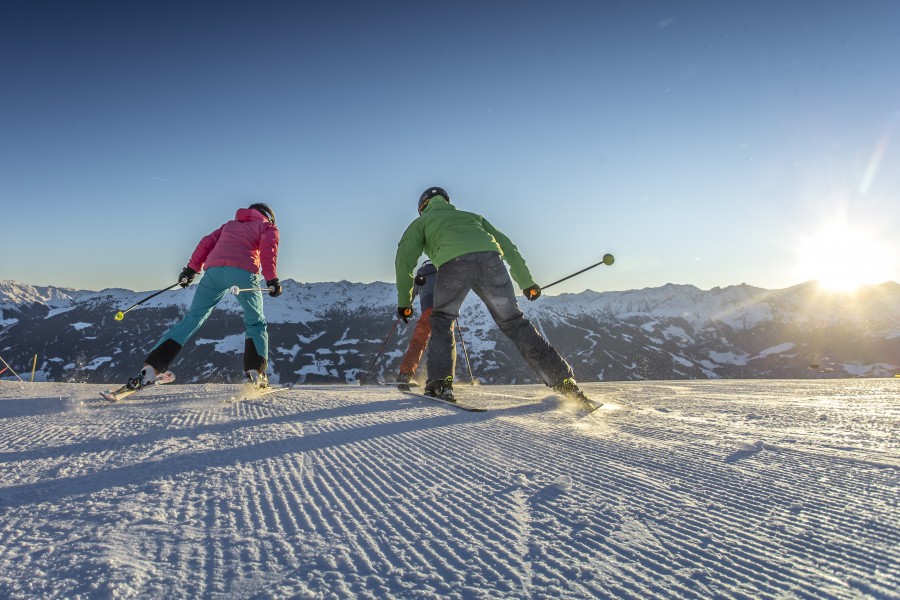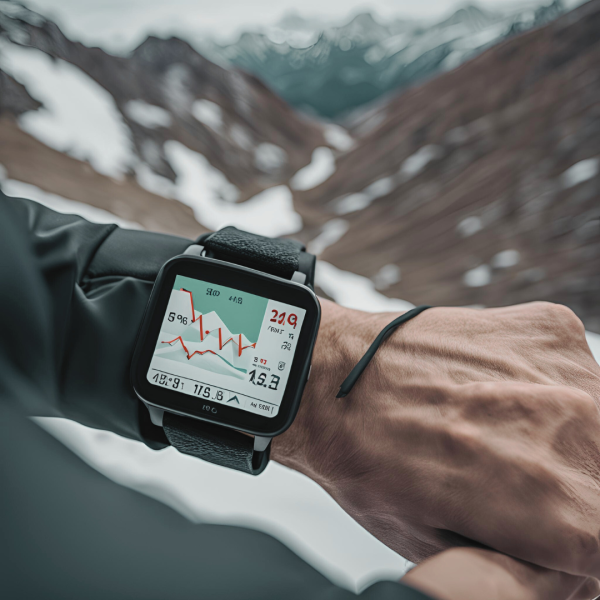Skiing isn’t just a popular winter sport, it’s also an excellent workout that can significantly boost your calorie burn. But how many calories do you really burn during a day on the slopes? That depends on several factors. In this article, you’ll discover what influences your calorie burn and how you can maximize it on the slopes – so you can enjoy your Kaiserschmarrn guilt-free.
Average Calorie Burn While Skiing
An average skier burns between 300 and 600 calories per hour, depending on their fitness level and skiing style. Intense runs on challenging slopes demand far more energy than casual turns on an easy blue slope. Here are some general guidelines:
- Leisurely Skiing: At a moderate pace and with minimal exertion, you can burn around 250 to 400 calories per hour.
- Advanced or Intense Skiing: Pushing yourself on red and black runs can lead to a burn of 500 to 800 calories per hour.
- Freeriding and Powder Skiing: Skiing in difficult terrain often increases calorie burn to over 800 calories per hour due to the balance and muscle strength required.
Factors That Influence Calorie Burn
Your actual calorie burn while skiing is as unique as your personal skiing style and depends on a variety of factors:
- Body Weight: A heavier body requires more energy to move, resulting in higher calorie consumption.
- Skiing Technique and Style: Smooth carving turns engage different muscle groups compared to traditional downhill techniques. The more dynamic and fast-paced your skiing, the more energy you’ll burn.
- Terrain and Snow Conditions: Powder or uneven slopes make skiing more demanding and increase calorie burn.
- Duration and Breaks: Naturally, your total calorie burn is influenced by the amount of time you spend actively skiing. Frequent breaks or long lift rides will lower your overall energy expenditure accordingly.
Tips to Maximize Your Calorie Burn
Vary your technique by switching between carving, freeriding, and classicdownhill skiing to engage different muscle groups. Stay active between runs with short walks or warm-up exercises to boost your calorie burn. Challenge yourself with more demanding slopes to make your workout even more effective. If that’s not enough, consider spending a few hours on cross-country skis during your ski vacation for an additional calorie-burning challenge.
Cross-Country Skiing: The Ultimate Calorie Burner in Winter Sports
On cross-country skis, you can take your energy expenditure to the next level. Cross-country skiing is considered one of the most intense and effective winter sports, especially in terms of calorie burn.
Unlike alpine skiing, where lift rides and breaks lower your calorie burn, your body stays in constant motion while cross-country skiing. Depending on intensity, technique, and body weight, cross-country skiers can burn between 500 and 1,000 calories per hour – often much more than the 300 to 600 calories burned during downhill skiing.
The high calorie burn in cross-country skiing comes from the full-body engagement and steady exertion. The dynamic skating technique, in particular, significantly increases energy expenditure. In contrast to alpine skiing, which resembles interval training with pauses, cross-country skiing provides a consistent endurance workout that keeps calorie burn high.
Track Your Performance
Smartwatches and Fitness Apps
If you want to know exactly how many calories you’ve burned on the slopes or trails, smartwatches and fitness trackers are your best bet. Devices from Garmin or Apple can track essential data such as speed, distance covered,elevation gain, and calories burned. Many devices even allow you to select specific activities for tracking.
Combined with apps like Ski Tracks or Slopes, which are compatible with most smartwatches, you can get even more detailed analyses of your winter sports day – perfect for monitoring your calorie burn and performance.
Skiline: A Snapshot of Your Ski Day
Skiline is a free service that lets skiers digitally track and analyze their activities in the ski area. By entering your lift pass number on the Skiline website or app, you can access a detailed overview of your vertical meters, piste kilometers, and lift rides.
This data can help you better estimate your calorie burn, especially when combined with fitness trackers or apps that calculate energy expenditure.
Skiline is available in many ski resorts worldwide, including popular destinations like the Skicircus Saalbach Hinterglemm Leogang Fieberbrunn and Ischgl. You can find a full list of Skiline-enabled ski resorts here.




